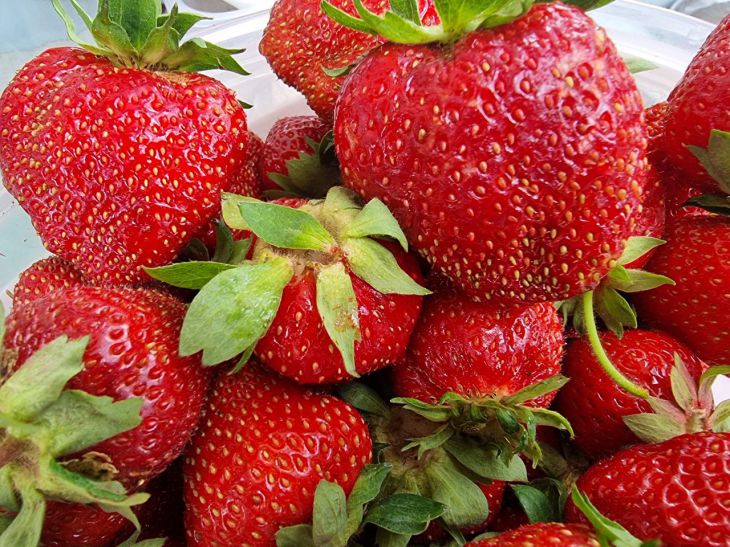How to Care for Strawberries in Spring: From Pruning to Fertilizing
Brown leaves, bare, brittle stems between them - most strawberry beds look pretty abandoned in the spring.
It's hard to imagine these pathetic green shoots bearing fruit again. But they will if you give them spring medicine and care in time.
Strawberry pruning
To ensure that new greenery has room to grow, you must first remove all dead leaves, says Anastasia Kovrizhnykh .
To prevent fungal diseases, experienced gardeners water the soil and plants with natural pesticides, such as diluted horsetail tea. You can also use commercial sprays made from plant extracts instead.
Also, cut off all runners that are not needed for propagation in varieties that bear fruit once. They weaken the plants, and the harvest will decrease the following year.

After pruning, the soil should be loosened, this helps the roots to grow. Be careful, strawberries have a flat root system and quickly lose support. If the roots are exposed and the bushes "stand up", they need to be hilled.
At the same time, make sure that the core of the strawberry is not covered with soil. Then water generously - only around the plant, never into the core.
How to Fertilize Strawberries Properly
The best fertilizer for strawberries is manure. However, it should be applied to the bed in the fall before planting. This allows most of the manure to rot by the time of planting, slowly releasing nutrients into the soil.
If you did not apply manure in the fall, the following three-stage fertilizing scheme is recommended.
Stage 1: nitrogen fertilization to stimulate leaf growth, done after cleaning the beds. You can use urea or nitroammophoska solutions, manure or chicken manure infusions, or simply spread compost under the strawberry bushes.
Stage 2: Before budding, it is necessary to feed the plants with potassium, which affects the ovary and size of the buds. Solutions of potassium nitrate or ash are used, watering the strawberries at the rate of half a liter per plant.
Stage 3: when the ovaries of future berries appear, boron fertilizing is recommended to stimulate them. You can use regular boric acid, dissolving 5 g in a bucket of water to spray the bushes.
Instead of this scheme, you can also use commercially available fertilizers for strawberries. One third is added before planting, one third is used in early spring, and the last third is used just before flowering.
Remember that restraint is required when fertilizing strawberries. First of all, abundant nitrogen fertilization stimulates the growth of plant foliage, but delays the formation of buds and reduces the number of flowers and fruits.
Strawberry diseases
There are various diseases and pests that can affect strawberries: for example, fungal infections such as gray mold. In rainy weather, the pathogen can spread quickly.
Sign: gray mold on the leaves. Later, the affected areas become reddish-brown and dry up. Brown rotten spots form on the fruits. They quickly grow, and a typical lawn with mouse-gray mold develops. Quickly remove and throw away the affected berries and leaves.
The best way to prevent gray mold is to not plant bushes too close together.
A good preventative measure is to mulch the strawberries with straw: it absorbs excess moisture and thus ensures that the fruit does not remain damp for too long after rain.
There are many strawberry diseases of fungal and viral origin, in which various spots appear on the leaves.
When grown on an industrial scale, various preparations are used against them for treatment, which can be purchased after diagnosis. In a garden plot, it is recommended to remove such bushes together with a lump of earth.
Why cover a garden bed with straw
When the fruits are formed, it is recommended to cover the ground under the strawberries with straw or wood chips. As a result, the fruits do not touch the ground, dry out faster after a rainstorm and are protected from fruit rot.
When you cover the bushes with straw ("light mulching"), moisture stays in the soil longer. Mulching also prevents weed growth and repels snails.
If you don't have straw, you can use dried grass clippings. Don't apply too thickly, or the grass should become moldy. Before spreading the straw or grass clippings, loosen the soil and remove any weeds.
Earlier we talked about 3 plants that tolerate cold and twilight well. They will feel comfortable even on the most uncomfortable windowsill.
